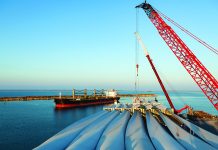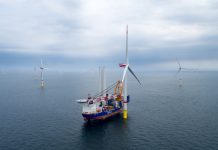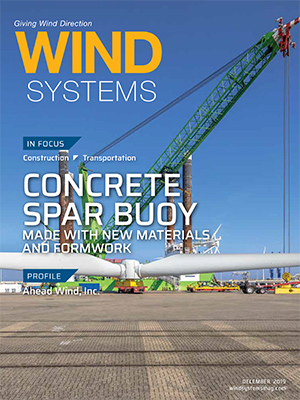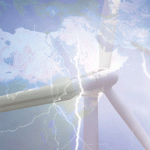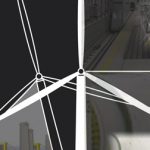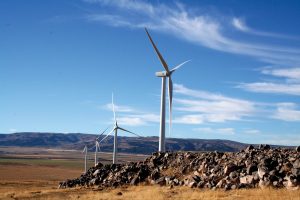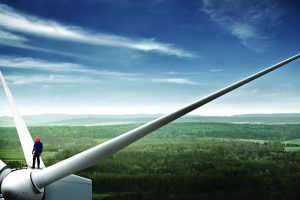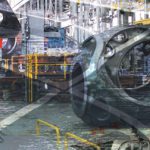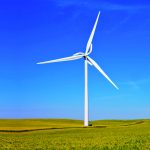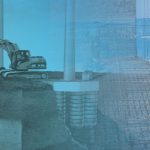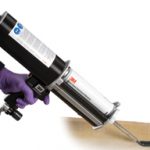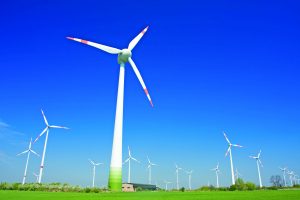As the wind-energy industry continues to grow and expand, the markets will only get more competitive. That is why it’s critical for companies to not only stay current with the latest trends and advances but also be able to take advantage of those trends as quickly as possible.
The minds behind Ahead Wind are developing a manufacturing method and business model allowing industry players to do just that by offering composite tooling as a service.
“We create composite tooling by 3D printing, finishing, and shipping ready to use molds,” said Rob Paddock, co-founder and CEO of Ahead Wind. “Our new technology empowers composite manufacturers to try new physical designs and take risks, all while saving money and reducing lead time. Companies are excited about what we’re doing because we are solving a problem that nearly everyone runs into in this industry. We’ve grown our capacity and are now talking to more companies about what they will be able to do if they partner with us.”
So, why is this manufacturing method and service a good fit with wind?
“Our technology lowers the cost of prototyping so that companies can actually afford to produce and test parts that would normally be reserved for simulation.” said Jacob Goldman, co-founder and CTO of Ahead Wind. “Right now, it costs an insane amount to manufacture a single profile because of the multiple toolsets, meaning rapid prototyping is out of the question. You just have to choose the best theoretical design and then just hope that one works, without getting the ability to test out different options in real life.”
A manufacturing company
Goldman stresses that Ahead Wind is not an energy company by nature, but a manufacturing company.
“We’re focusing on technologies to improve the world of composites,” he said. “And that can be applied to a lot of different industries. But looking at the growing competitive landscape of the wind industry and the push for rapid production, more efficient designs, and stronger components, we think that wind is an industry that could use our technology the most.”
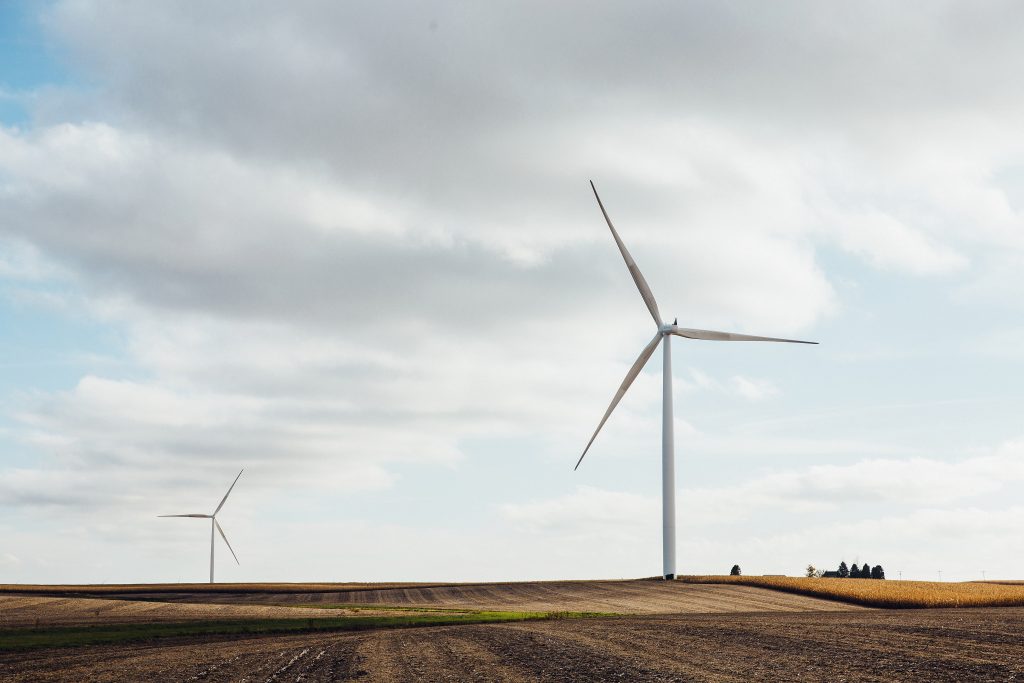
Agile development
Ahead Wind’s objective is to shift the paradigm of composite manufacturing for the companies it works with. Corrections and improvements can be made far quicker and much more efficiently using Ahead Wind’s manufacturing methods.
A great example of this in action is the prototypes Ahead Wind is helping with for a section of a turbine blade being tested in a wind tunnel at the University of Texas, Dallas, according to Goldman.
“Our client, Aquanis, sent over a component design, but we ended up reworking it entirely with them, extending the project significantly and picking up a second contract with them,” he said. “We were working with them in order to put out detailed answers and really investigate what was happening; we weren’t just accepting whatever they gave us because we wanted to truly solve their problems. And because of our technology and process, we have the ability to give our clients the best possible solutions. We want to deliver a really high-quality product every time. That’s extremely important for us.”
Goldman said this project has the potential to offer major advantages to the wind industry.
“It has the potential to significantly impact the efficiency of wind-turbine blades if the research turns out well,” he said. “And it is very exciting because this is a project that is unlike anything we have done before. It’s a bit different than the molds that we traditionally make because the project is a purely 3D-printed section.”
Paddock said he is also excited by the project and its potential.
“I look forward to seeing this project through and watching it make real wind turbines far more efficient,” he said. “At the end of the day, our company is about helping the industry do exactly that.”

Affordable production runs
The technology Ahead Wind brings to the table allows companies to do “one-offs” in a cost-effective manner, according to Paddock.
“We believe our business model needs to reflect the change in technology and make it cost-effective for our customers,” he said. “Instead of customers having to buy and purchase all their tooling, they will actually get an option to rent the tooling they need for a specified amount of time. And after that time, they can return it and have access to the new tooling, so they’re not stuck with old tooling that is only good to make old designs.”
Ahead Wind is calling this approach Hardware as a Service (HaaS), according to Goldman.
“That flexibility comes in handy when it’s time to refurbish old tooling that might be a decade old just because a company doesn’t want to buy a new one,” he said, “It also helps deal with the inevitable failure of these tools, allowing companies to keep production up without having to organize the manufacturing of a new part.”
Changes in blade design and techniques are exponentially occurring, according to Goldman.
“Through the combination of our technology, we can make the tooling to keep up with that change, and you don’t have to stop production because we will work with you to make those changes,” he said. “We can really stabilize the overhead cost of a manufacturing line while offering you the ability to have diversity in what you are producing. And all of this will cost nothing extra because you are paying for a subscription manufacturing service that allows you to exchange tooling as you adapt.”
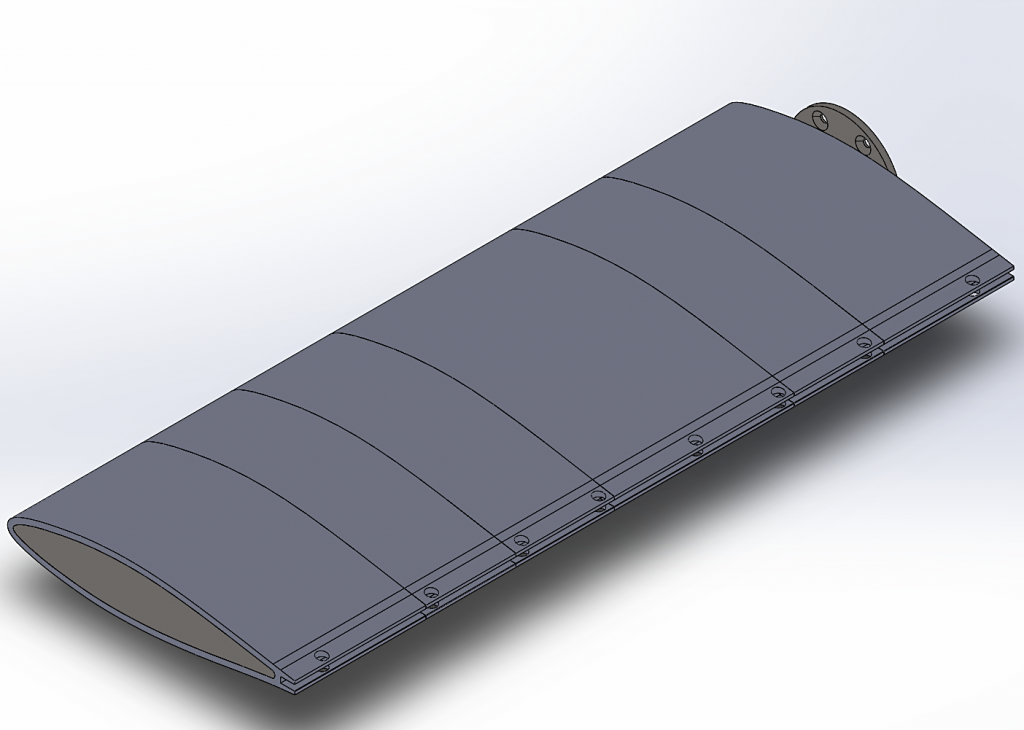
Onsite-manufacturing advantage
With turbines blades getting larger, the advantages associated with onsite manufacturing become crystal clear. Goldman believes Ahead Wind is working to make that a reality.
“Our technology moves us in a step in the direction of onsite manufacturing,” he said. “One of the big problems that we’ve heard over and over again, is transportation. The first iteration of our technology is not building full-scale tooling, but you can bring the technology closer. In the near future, you can put our machine down somewhere, make your molds onsite, and then use those molds onsite.”
Ahead Wind can coordinate with a company to set up a tent-type facility that can be used to create mold portions locally, right on the farm, according to Goldman.
“Once the job moves from the prototyping stage to the mass-production stage, Ahead Wind can supply the current tooling needs of manufacturers,” he said. “Looking forward, we see one farm incorporating multiple different airfoils. Our technology and subscription service model help bring this to reality. This means creating tooling for smaller production runs, each with a unique tooling set.”
Part of Ahead Wind’s goals is to make sure the industry understands the advantages to using its innovative approach to manufacturing, according to Goldman.
“We want to move toward allowing companies to explore different options affordably and the ability to talk to experts through our service who have knowledge of your company’s manufacturing so that it can be customized for your needs,” he said. “This way, we can have a meaningful impact on your company and help propel you into the future.”
Wind will have to keep up with the pace
As manufacturing becomes faster and cheaper, the wind industry is going to need to keep up with the pace of industry if it wants to thrive, according to Goldman.
“Wind is definitely going to push some of the technical aspects forward,” he said. “But there’s going to be a lot of automation innovation because of the size of the turbines. There are a lot of technical details that are yet to be solved because of the industry’s uniqueness.”
And that is where Ahead Wind’s 3D printing and additive manufacturing will be an advantage, according to Goldman.
“Additive manufacturing has a huge potential to solve a lot of the subtle problems that occur in wind-industry manufacturing,” he said. “The combination of that — our simulation, generative design, and onsite manufacturing — will really enable new and creative designs to pop out.”
Paddock believes the changes are inevitable. But he is excited to craft the changes in a way that can add value to everyone in the wind industry.
“I think that’s really going to impact how the industry operates at a fundamental level as factories go from actually purchasing the tools to renting them,” he said. “And in doing so, they become more flexible, more efficient, and, ultimately, they’re able to help their customers in a more effective way. That’s what I’m really excited about.”
Ahead Wind, Inc.
- Founded: 2018
- Headquarters: Denver, Colorado
- Website: www.aheadwind.com

















